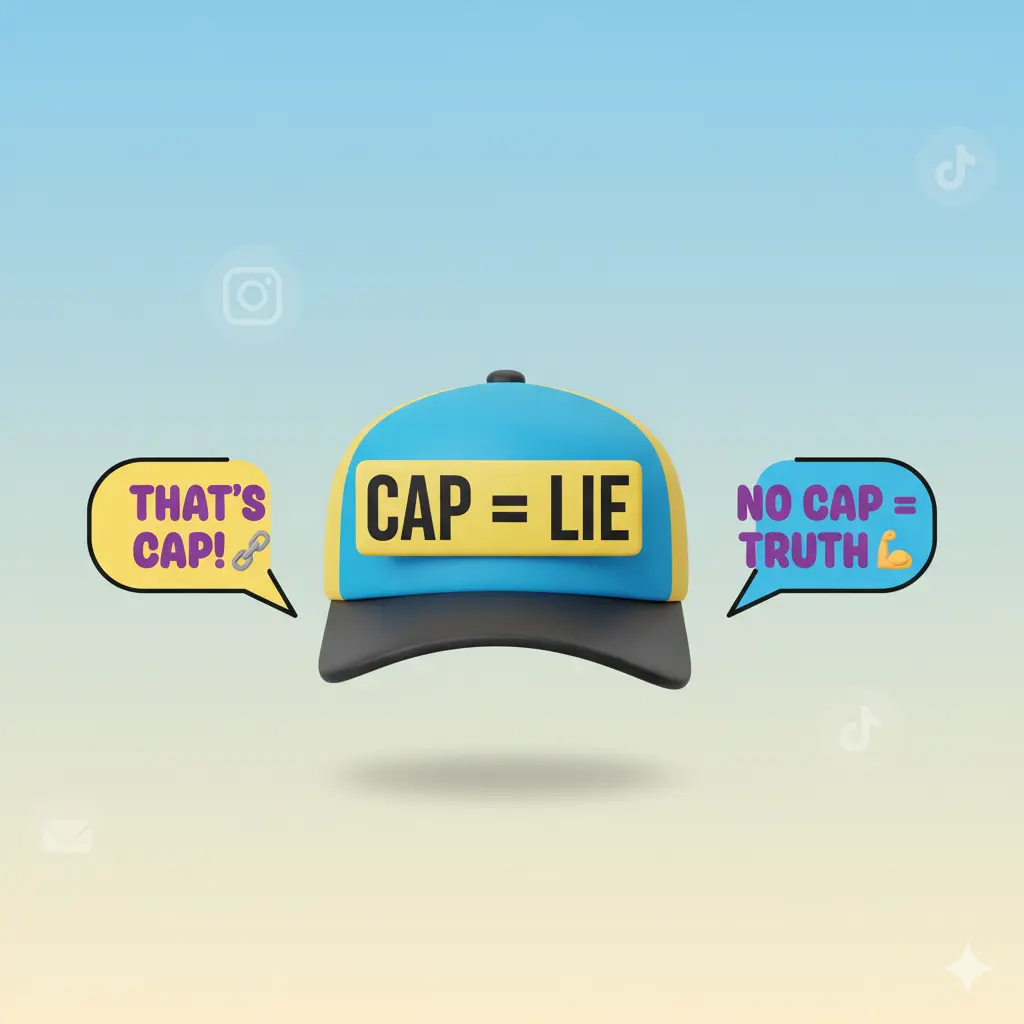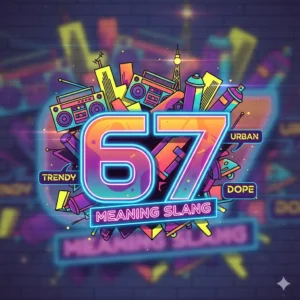Slang is the heartbeat of modern culture, and every year, new words and phrases pop up in our conversations, songs, and social media feeds.
One of the most viral slang terms of Gen Z culture is “cap.”
If you’ve ever scrolled through TikTok, listened to rap lyrics, or seen the 🧢 emoji on Twitter, you’ve probably asked: What does cap mean in slang?
This in-depth guide will break down the cap slang meaning, where it comes from, how it’s used in music, memes, and everyday conversations, and why it has become a global linguistic trend.
What Does Cap Mean in Slang? 🤔
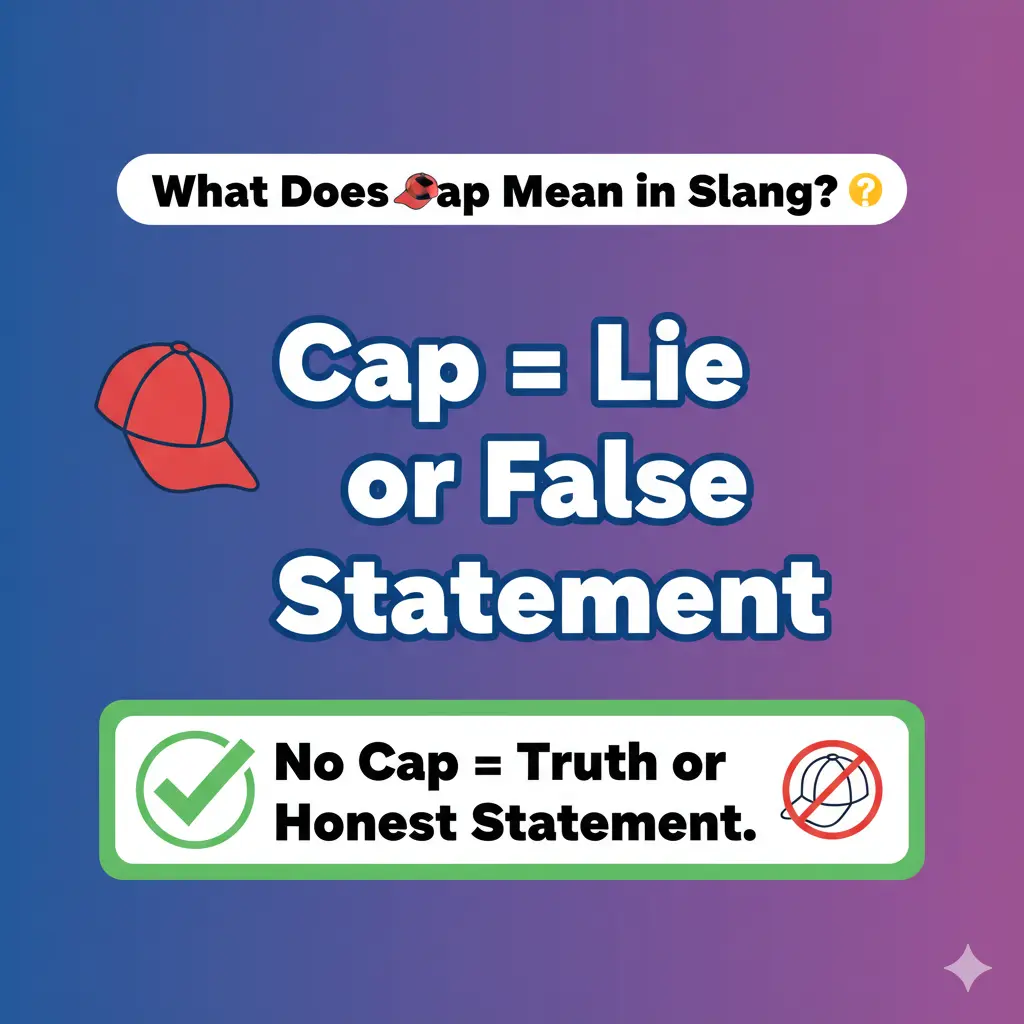
In slang, cap means a lie, exaggeration, or something untrue.
- “That’s cap” → “That’s a lie.”
- “Stop capping” → “Stop lying.”
- “He’s capping” → “He’s exaggerating.”
The opposite is “no cap”, which means “I’m telling the truth” or “for real.”
👉 Example in conversation:
- “I just met Beyoncé yesterday.”
- “That’s cap, bro.”
- “This food is amazing, no cap.”
- (Meaning: I’m serious, not lying.)
Cap Slang Origin: Where Did It Come From? 📜
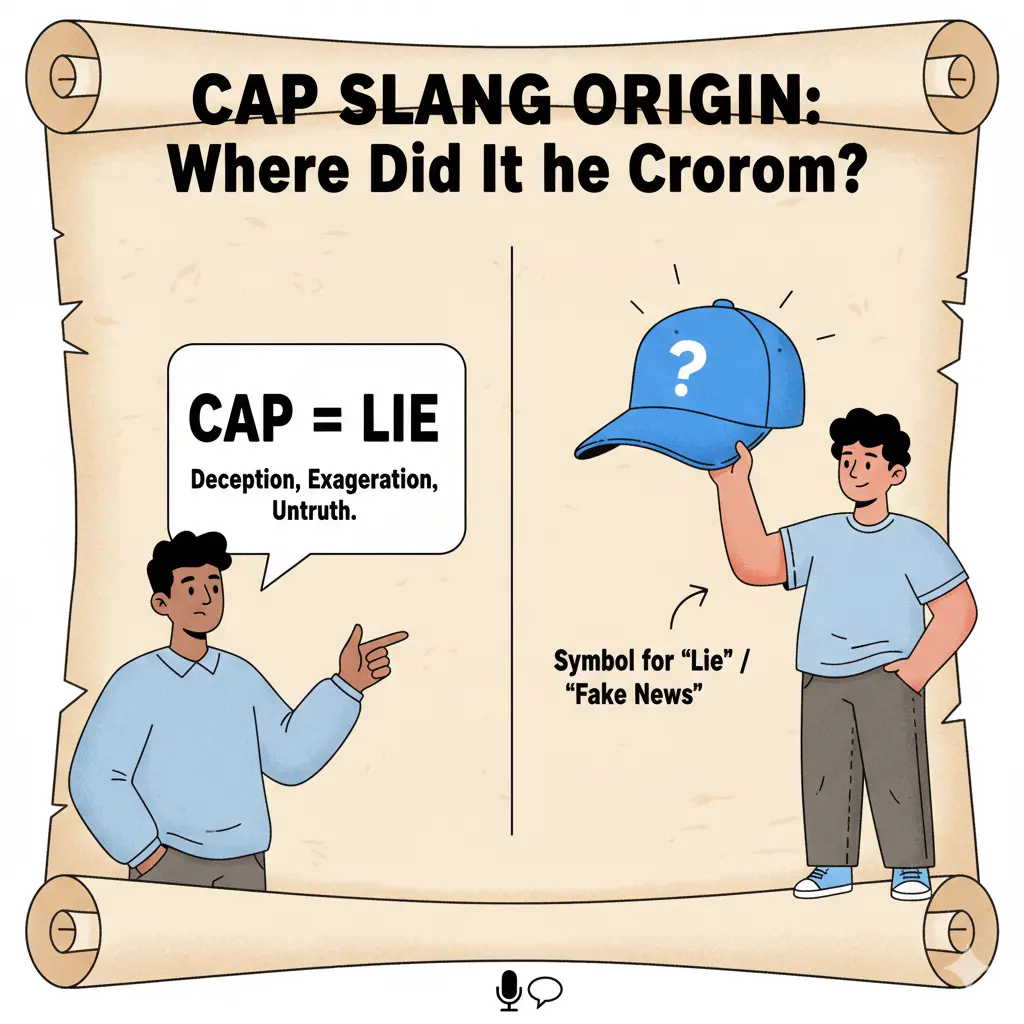
The cap slang origin traces back to African American Vernacular English (AAVE).
- Historically, “capping” meant bragging or exaggerating.
- In the 1990s, Southern rappers began using it to describe fake behavior.
- By the 2010s, “cap” was widely used to mean lying.
Hip-hop artists like Future, Young Thug, and Migos helped popularize the phrase. Today, it’s everywhere — from rap songs to TikTok hashtags.
Cap Slang in Pop Culture 🎶
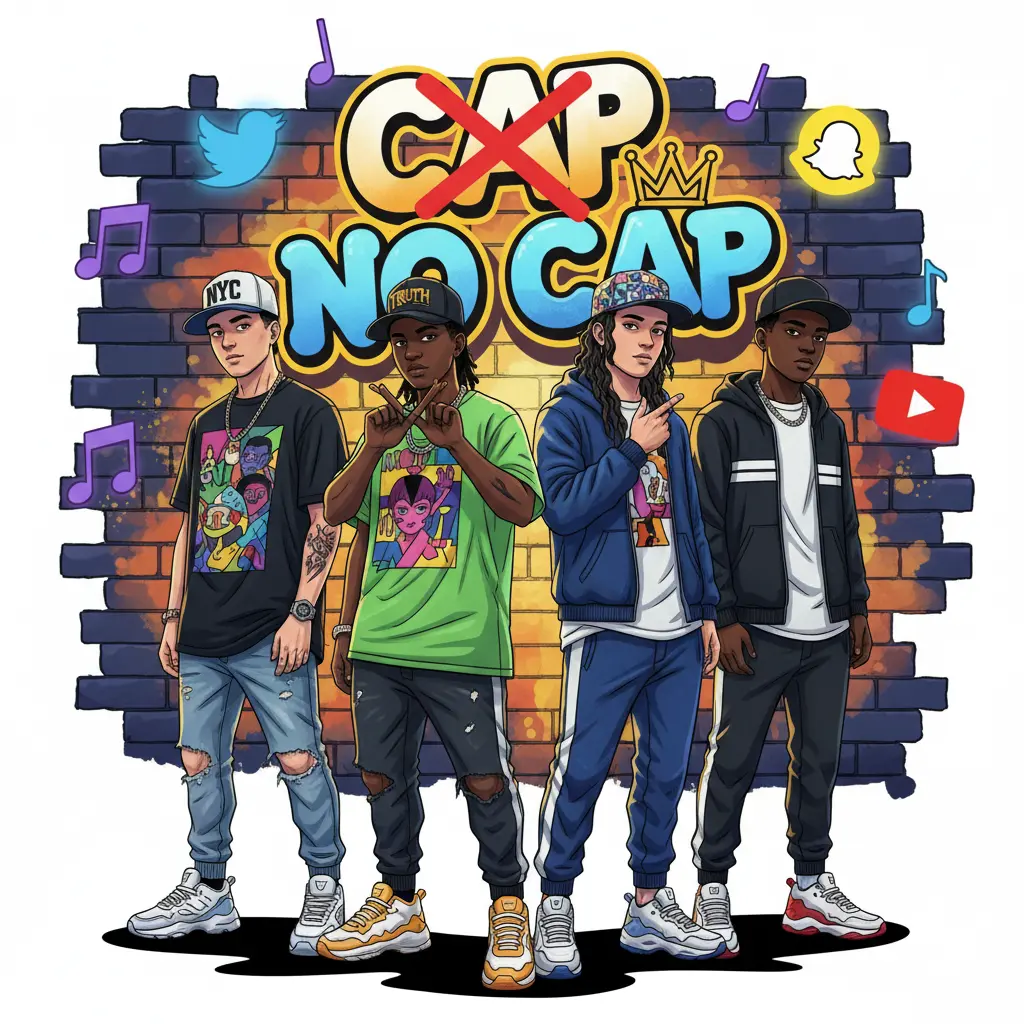
Slang doesn’t go mainstream without music and social media. The phrase “no cap” exploded thanks to:
- Rap songs – Future’s track “No Cap” brought the term global recognition.
- Sports culture – NBA stars like LeBron James and Kevin Durant often reply with “cap” on Twitter when fans exaggerate.
- TikTok trends – Challenges with hashtags like #NoCap keep the slang alive.
- Memes – The 🧢 emoji has become a shorthand for calling out lies.
👉 Example: A viral tweet might say: “I can beat Michael Jordan 1v1 🧢🧢🧢” — meaning the claim is obviously a lie.
Common Cap Slang Phrases 📝
Here are the most frequent cap slang examples you’ll see:
- “That’s cap” → That’s a lie.
- “Stop capping” → Stop lying.
- “He’s capping” → He’s exaggerating.
- “No cap” → I’m telling the truth.
- Cap emoji (🧢) → Visual symbol for a lie.
Cap Slang Examples in Real Life 💬
Let’s see cap slang in text, TikTok, and conversations:
- On TikTok: “This makeup hack changed my life, no cap.”
- On Twitter: “I could out-rap Eminem 🧢🧢🧢.”
- At school:
- Student: “I studied all night.”
- Friend: “Cap.”
Even brands use it now. Wendy’s Twitter account once replied to a competitor’s bold claim with just one word: “Cap.”
Why Do People Say Cap? 📢
People use cap because it’s:
- Quick & simple → One word replaces a sentence like “That’s not true.”
- Trendy → Slang creates belonging within Gen Z and Millennial groups.
- Boosted by visuals → The 🧢 emoji adds humor and makes it easy to share.
This is why cap vs. no cap slang has become so popular online.
Cap Slang on Social Media 📱
Social media is the main reason slang like cap spreads globally.
- TikTok: Hashtags like #Cap or #NoCap rack up millions of views.
- Instagram: Influencers use it in captions for authenticity.
- Twitter/X: Fans flood comments with 🧢 to call out exaggerations.
- Reddit: Threads often debate what’s “facts” vs. “cap.”
👉 Example: “This filter makes me look like a celebrity, no cap.”
Cap vs. Other Slang Terms 🔄
Let’s compare cap slang definition with related slang:
- Cap = Lie
- No cap = Truth
- Flexing = Showing off (may or may not be true)
- Fake = Not real (broader than cap)
- BS = Similar meaning, but more vulgar
This list of slang words like cap shows how it fits into the bigger picture of online language.
Cap Slang in Music 🎤
Rap and hip-hop have fueled the slang’s popularity:
- Future – Famous for using “no cap.”
- Young Thug – Frequently uses “capping” in lyrics.
- Migos – Tie “cap” to fake lifestyles in their songs.
Lyrics often highlight the contrast between fake (cap) and real (no cap).
How to Use Cap Slang Correctly ✅
Want to sound natural when using cap slang in text or conversations? Follow these rules:
- Use “cap” when calling out a lie.
- Use “no cap” when emphasizing truth.
- Don’t overuse it, or it sounds forced.
- Remember: not everyone understands it (especially older generations).
👉 Example:
- “He said he owns five houses — cap.”
- “This is the best burger I’ve had, no cap.”
The Meme Culture of Cap 😂
The 🧢 emoji has turned “cap” into a meme machine.
- Tweets flooded with 🧢 when someone lies.
- TikTok skits where someone makes an outrageous claim, followed by “cap.”
- Instagram reels where friends jokingly call each other out.
This cap slang meme culture keeps the phrase alive and entertaining.
The Future of Cap Slang 🔮
Will cap slang trend last forever? Probably not — slang evolves fast. But given its deep roots in rap culture and TikTok memes, it will likely remain relevant for a while.
Just like words such as “lit” or “brutal”, “cap” has earned a place in the internet dictionary.
FAQs About Cap Slang ❓
Q1: What does cap mean in slang?
👉 It means a lie or exaggeration.
Q2: What does no cap mean?
👉 It means seriously, for real, no lie.
Q3: What is stop capping meaning?
👉 It means stop lying or exaggerating.
Q4: What does the 🧢 cap emoji mean?
👉 It visually represents lying or dishonesty.
Q5: Where did cap slang originate?
👉 From African American Vernacular English (AAVE), later popularized by hip-hop.
Q6: What’s the difference between cap and flex?
👉 Cap = lying, while flex = showing off (may be true).
Q7: Is cap slang offensive?
👉 No, it’s casual and not considered insulting.
Q8: Why do Gen Z and Millennials use cap so much?
👉 Because it’s trendy, simple, and spread by TikTok and rap culture.
Conclusion:
In today’s fast-changing digital world, knowing the slang term “Cap” is essential to understanding online conversations and youth culture. Whether someone says “No Cap” to prove honesty or calls out “That’s Cap” to label a lie, this phrase has become a powerful part of modern communication.
By understanding “Cap Slang Meaning,” you can engage more effectively on social media, avoid confusion, and connect with conversations in a trendy and confident way.

